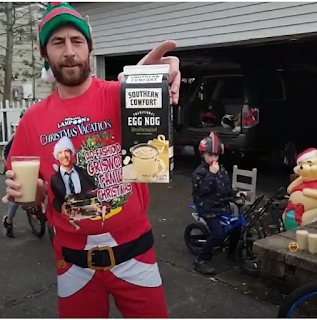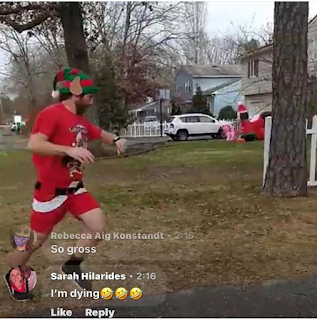How did I go about that? It was a pretty simple idea and plan altogether. I took my December running mileage and calculated my average daily mileage for the month (5.94 miles/day). Now, the plan was to just run a higher average daily mileage in January and continue to increase that daily average for February, March, and April. There are no rest days built in, no built in cross training days, no scheduled long runs or speed workouts. None of that typical training plan stuff that a coach would probably include. It has been more or less all based on feel and how my body is reacting and when it is ready to be pushed, using that average daily mileage figure as the target. November and December were supposed to be my “off season” or recovery months after last year’s racing, but we had a pretty mild winter and I really didn’t cut back on running as much as I had intended, so my starting base mileage for this training plan was greater than I originally thought it would be. I thought this might spell trouble for me when trying to incrementally build my mileage each month, but I’ve been able to hit all of my monthly mileage goals thus far without a great deal of difficulty.
That’s not to say there haven’t been a few speed bumps and challenges along the way. Life happens and schedules become disrupted, but I believe if you’re committed to a goal you’ll adapt and find a way to make it happen. My family went through a one and a half week bout with a stomach flu in January. Snowstorms made it difficult to get out for runs on multiple occasions. Most recently, a case of colds and sinus congestion made their rounds through our household which we still have a few lingering symptoms from and are in what I hope are the final stages of recovery. Through all the challenges, the goal never felt out of reach.
Now that the training is nearly complete, the question remains as to whether it was ever a good plan at all. The backyard racing format is still in its infancy. There is a wealth of data to support the science of good and bad training for most race distances. This is not the case for the unique structure, demands, and strategy of the backyard race format. Whether this plan I followed was good or bad will not be determined until the end of Memorial Day weekend when my race at Capital Backyard Ultra is concluded. I am confident and excited for the race. I have high hopes for my day there. I am excited to run through two consecutive nights. I intend to PR my greatest distance ever run and finally surpass that 200 mile distance milestone then continue to see how much farther I can go before breaking. The ultimate goal is to be the last person standing; that is the point of the race. The “B” goal for me is to push until I break, to never quit, but time out on a lap due to sheer exhaustion and inability to continue the required pace. If I achieve either of those goals, I believe it will provide some validation to my training plan.
Scott Snell
24 April 2022










































